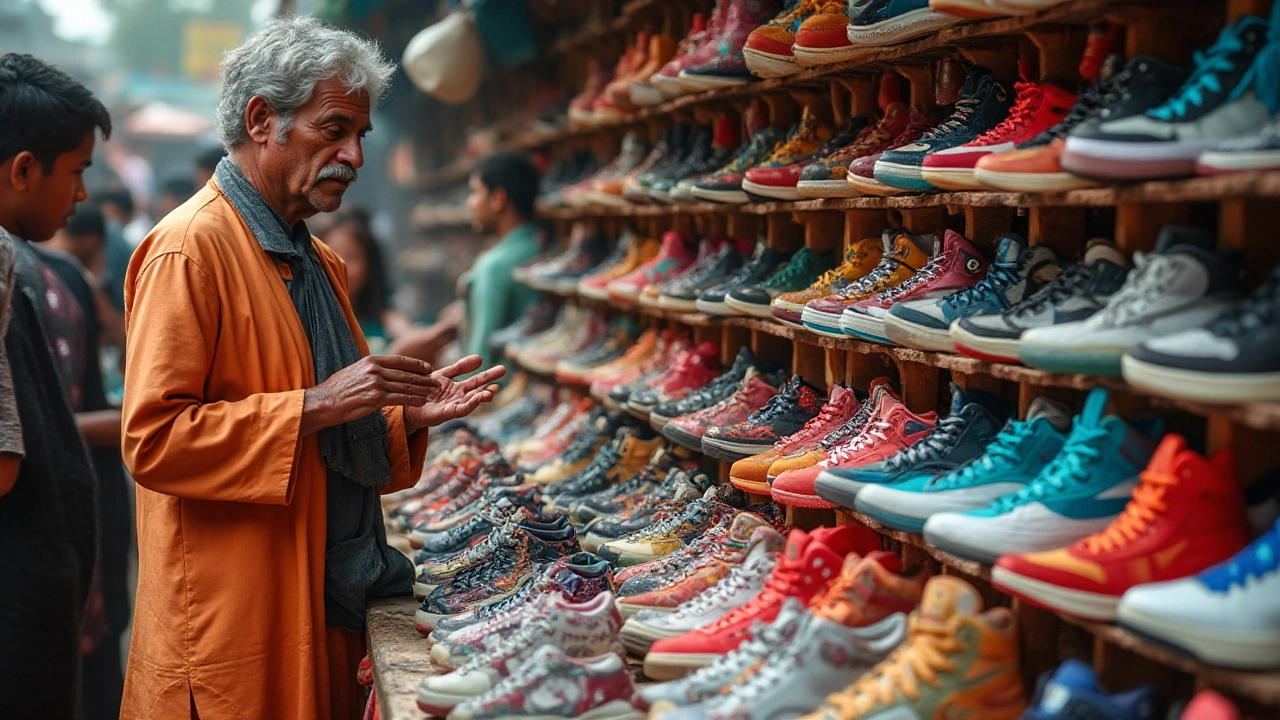Shoe Evolution: How Footwear Has Changed and What It Means for Your Closet
Ever wonder why the shoes you wear today look so different from what people wore a few centuries ago? The answer lies in a long, fascinating journey of materials, technology, and culture. Understanding that journey helps you pick shoes that not only look good but also feel right and last longer.
From Bare Feet to Modern Sneakers
In the earliest days, humans wrapped animal hides around their feet just to protect them from rocks and mud. Those simple wraps evolved into leather sandals in ancient Egypt and Greece, where artisans started shaping soles for better grip. By the Middle Ages, cobblers were adding wooden platforms for clergy and sturdy boots for soldiers.
The Industrial Revolution changed everything. Rubber, invented in the 19th century, gave us the first mass‑produced, water‑proof soles. Suddenly shoes were cheaper, more uniform, and could be made in huge numbers. This opened the door for everyday people to own multiple pairs instead of a single, heavily worn pair.
Fast forward to the 1920s and 1930s: canvas uppers and rubber soles merged to create the first athletic shoes. Companies like Converse and Keds turned these into cultural icons for sport and street style. After World War II, the sneaker boom exploded—think adidas stripes, Nike swoosh, and the rise of basketball shoes that blended performance with fashion.
Today’s shoes are a blend of high tech and eco‑conscious design. Engineers embed foam, memory gel, and even 3‑D‑printed midsoles for extra cushioning. Brands are also experimenting with recycled plastics, vegan leather, and biodegradable soles to cut down waste. The result? Shoes that feel lighter, support your foot better, and claim to be kinder to the planet.
So, how does this history help you shop? Look for shoes that borrow the best of each era: a sturdy, flexible sole (a lesson from rubber), breathable uppers (thanks to canvas and mesh), and a design that matches your lifestyle. If you need something for long walks, choose a pair with good arch support and durable leather—a nod to old‑school craftsmanship. For gym sessions, pick a model that uses modern cushioning and a breathable knit.
Key Trends Shaping Today’s Shoes
One trend that keeps coming back is the “retro revival.” Designers dig up iconic silhouettes from the ’70s and ’80s, update the materials, and release them as limited drops. If you love a classic look without the old‑school wear, this is a safe bet.
Another big shift is minimalism. Shoes with thin, flexible soles let your foot move naturally, echoing the barefoot feel of early sandals while still offering protection. Brands that focus on minimal design often use premium leather that ages beautifully—think of it as an investment that gets better with time.
Comfort tech isn’t just hype; it’s backed by research. Features like carbon‑fiber plates, responsive foam, and ergonomic footbeds improve performance and reduce fatigue. If you spend hours on your feet, these technologies can make a noticeable difference.
Finally, sustainability is no longer a buzzword. Look for certifications like “recycled content” or “vegan leather.” Shoes made from ocean‑plastic yarns or plant‑based materials add a feel‑good factor that aligns with modern values.
Whether you’re buying your first pair of sneakers or refreshing a classic leather shoe, remembering the shoe evolution helps you choose wisely. Pick a style that respects the past, embraces today’s tech, and fits your personal routine. Your feet will thank you, and your wardrobe will stay fresh for years to come.

